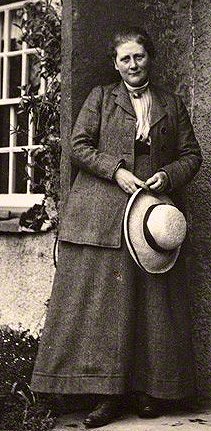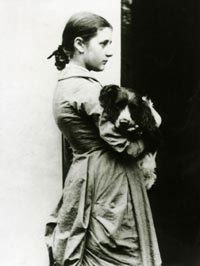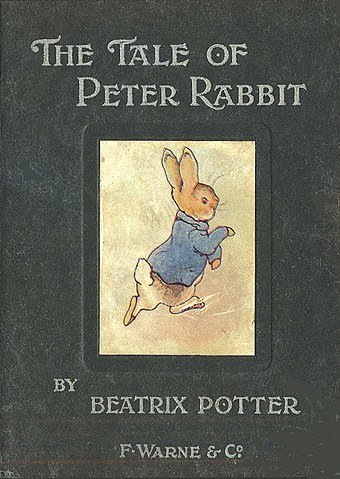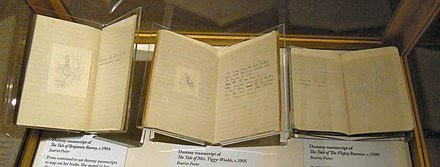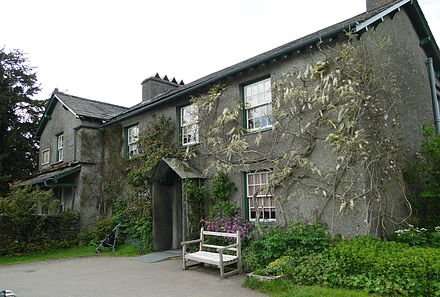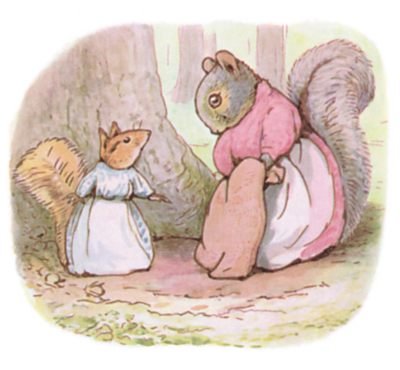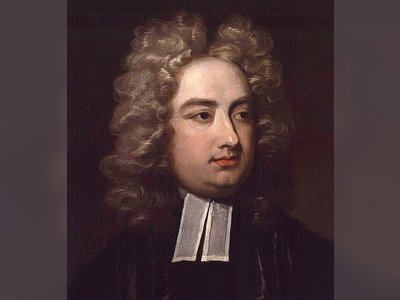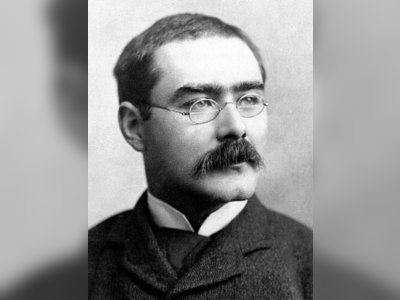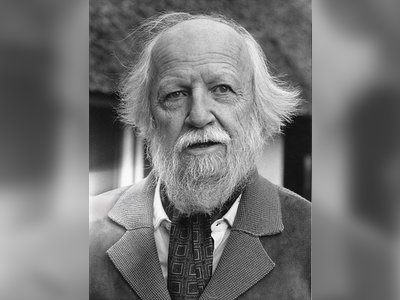British Heritage
Remember, Cherish, Learn.
beta
Beatrix Potter - Her Children's Books Captivated the World's Adults
Contribution to British Heritage.
Beatrix Potter, an accomplished English writer, illustrator, natural scientist, and conservationist, made a significant contribution to British heritage through her timeless children's books featuring delightful animal characters. Her captivating stories and enchanting illustrations have become an integral part of British literary and cultural heritage, cherished by generations of children and adults alike.
Born into an upper-middle-class family on July 28, 1866, Beatrix Potter spent her early years isolated from other children and educated by governesses. This solitude allowed her to develop a deep connection with nature, and she spent her time observing and painting the flora and fauna around her. Potter's love for the countryside, especially Scotland and the Lake District, inspired her later works and became an essential aspect of her legacy.
Potter's legacy primarily revolves around her remarkable children's books, which she both wrote and illustrated. Her breakthrough came with the self-published success of "The Tale of Peter Rabbit" in her thirties, which gained worldwide recognition and popularity. Following this triumph, she dedicated herself to creating a total of thirty books, with her twenty-three children's tales becoming the most celebrated.
Her delightful stories, often featuring animal protagonists facing engaging adventures and moral dilemmas, resonate with readers of all ages. The tales include timeless classics such as "The Tale of Benjamin Bunny," "The Tale of Jemima Puddle-Duck," and "The Tale of Tom Kitten," to name a few. These enduring stories have transcended generations, and her characters, including Peter Rabbit, have become icons of children's literature.
Beatrix Potter's contribution to British heritage extends beyond her literary creations. Her passion for the preservation of the natural landscape and rural life led her to buy Hill Top Farm in the picturesque Lake District in 1905. Over the years, she acquired additional farms, showing her commitment to safeguarding the unique hill country landscape and preserving the traditional practices of fell farming.
As a dedicated farmer, Potter became a respected breeder of Herdwick sheep, a native breed of the Lake District. Her diligent efforts and success in farming earned her admiration among the local farming community. Moreover, Potter's collaboration with the National Trust played a crucial role in conserving extensive tracts of land that now form part of the Lake District National Park.
Potter's contributions to land preservation, coupled with her support for the National Trust's initiatives, helped protect areas of extraordinary natural beauty and cultural significance, allowing future generations to experience the splendor of the British countryside.
Beatrix Potter's success as an author and illustrator is unparalleled. The publication of "The Tale of Peter Rabbit" in 1902 marked the beginning of her illustrious literary career. This charming tale of a mischievous rabbit's adventures in Mr. McGregor's garden instantly captivated children and adults alike. The book's popularity soared, and Potter's publisher, Frederick Warne & Co., recognized her talent and potential.
Following the triumph of Peter Rabbit, Potter continued to create a series of delightful stories, each featuring intricate watercolor illustrations of her animal characters. Her books became cherished possessions in countless British households, enchanting readers with their whimsical charm and engaging narratives.
Additionally, Potter's entrepreneurial acumen played a significant role in her success. She capitalized on her characters' popularity, creating a wide range of merchandise, including dolls, board games, and figurines, all based on her stories. These ventures not only brought her substantial financial gains but also contributed to the widespread dissemination of her beloved characters.
Beatrix Potter led a remarkable life, blending her creative talents with her love for the natural world and a desire to preserve the countryside. Apart from her literary and artistic achievements, she was an accomplished mycologist, making significant contributions to the scientific field of fungi. Her research and drawings of fungi demonstrated her dedication to accurate observation and attention to detail.
Tragedy struck when her engagement to Norman Warne, her publisher, ended with his untimely death at the age of 37. Nevertheless, Potter persevered, acquiring Hill Top Farm and immersing herself in the management of the land and the care of her beloved Herdwick sheep. In 1913, she married William Heelis, a local solicitor who supported her passion for farming and conservation.
Potter's legacy is not only celebrated through her books but also through various adaptations, including ballets, films, and television series. Her influence on British heritage remains enduring, with her characters adorning countless products, inspiring artistic endeavors, and continuing to be beloved by children and adults around the world.
Beatrix Potter's profound impact on British culture, her contributions to literature, art, and land conservation, and her legacy as a pioneering children's author and illustrator have secured her place as one of Britain's most cherished and influential figures.
Born into an upper-middle-class family on July 28, 1866, Beatrix Potter spent her early years isolated from other children and educated by governesses. This solitude allowed her to develop a deep connection with nature, and she spent her time observing and painting the flora and fauna around her. Potter's love for the countryside, especially Scotland and the Lake District, inspired her later works and became an essential aspect of her legacy.
Legacy
Potter's legacy primarily revolves around her remarkable children's books, which she both wrote and illustrated. Her breakthrough came with the self-published success of "The Tale of Peter Rabbit" in her thirties, which gained worldwide recognition and popularity. Following this triumph, she dedicated herself to creating a total of thirty books, with her twenty-three children's tales becoming the most celebrated.
Her delightful stories, often featuring animal protagonists facing engaging adventures and moral dilemmas, resonate with readers of all ages. The tales include timeless classics such as "The Tale of Benjamin Bunny," "The Tale of Jemima Puddle-Duck," and "The Tale of Tom Kitten," to name a few. These enduring stories have transcended generations, and her characters, including Peter Rabbit, have become icons of children's literature.
Contribution to British Heritage
Beatrix Potter's contribution to British heritage extends beyond her literary creations. Her passion for the preservation of the natural landscape and rural life led her to buy Hill Top Farm in the picturesque Lake District in 1905. Over the years, she acquired additional farms, showing her commitment to safeguarding the unique hill country landscape and preserving the traditional practices of fell farming.
As a dedicated farmer, Potter became a respected breeder of Herdwick sheep, a native breed of the Lake District. Her diligent efforts and success in farming earned her admiration among the local farming community. Moreover, Potter's collaboration with the National Trust played a crucial role in conserving extensive tracts of land that now form part of the Lake District National Park.
Potter's contributions to land preservation, coupled with her support for the National Trust's initiatives, helped protect areas of extraordinary natural beauty and cultural significance, allowing future generations to experience the splendor of the British countryside.
Success
Beatrix Potter's success as an author and illustrator is unparalleled. The publication of "The Tale of Peter Rabbit" in 1902 marked the beginning of her illustrious literary career. This charming tale of a mischievous rabbit's adventures in Mr. McGregor's garden instantly captivated children and adults alike. The book's popularity soared, and Potter's publisher, Frederick Warne & Co., recognized her talent and potential.
Following the triumph of Peter Rabbit, Potter continued to create a series of delightful stories, each featuring intricate watercolor illustrations of her animal characters. Her books became cherished possessions in countless British households, enchanting readers with their whimsical charm and engaging narratives.
Additionally, Potter's entrepreneurial acumen played a significant role in her success. She capitalized on her characters' popularity, creating a wide range of merchandise, including dolls, board games, and figurines, all based on her stories. These ventures not only brought her substantial financial gains but also contributed to the widespread dissemination of her beloved characters.
General Information
Beatrix Potter led a remarkable life, blending her creative talents with her love for the natural world and a desire to preserve the countryside. Apart from her literary and artistic achievements, she was an accomplished mycologist, making significant contributions to the scientific field of fungi. Her research and drawings of fungi demonstrated her dedication to accurate observation and attention to detail.
Tragedy struck when her engagement to Norman Warne, her publisher, ended with his untimely death at the age of 37. Nevertheless, Potter persevered, acquiring Hill Top Farm and immersing herself in the management of the land and the care of her beloved Herdwick sheep. In 1913, she married William Heelis, a local solicitor who supported her passion for farming and conservation.
Potter's legacy is not only celebrated through her books but also through various adaptations, including ballets, films, and television series. Her influence on British heritage remains enduring, with her characters adorning countless products, inspiring artistic endeavors, and continuing to be beloved by children and adults around the world.
Beatrix Potter's profound impact on British culture, her contributions to literature, art, and land conservation, and her legacy as a pioneering children's author and illustrator have secured her place as one of Britain's most cherished and influential figures.
- Beatrix Potteren.wikipedia.org
